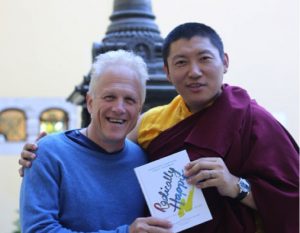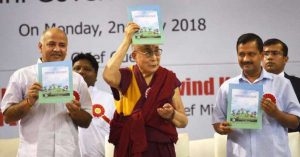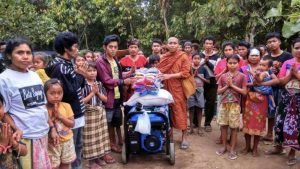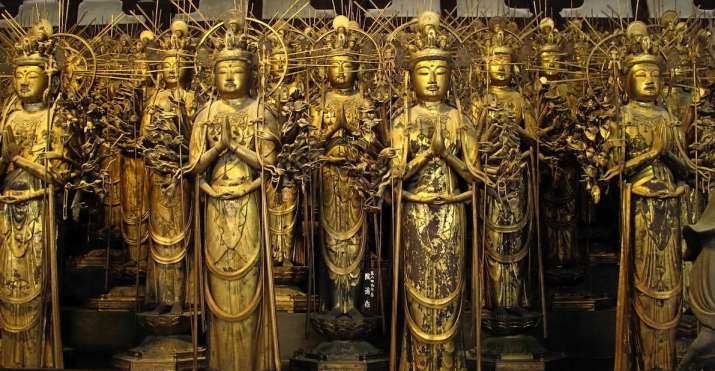
A 45-year undertaking to clean, repair, and restore 1,001 statues of the bodhisattva Avalokiteshvara (Jp: Kannon; Ch: Guanyin) has been completed at the Sanjusangen-do Buddhist temple in the historic Japanese city of Kyoto, after the final set of restored sculptures was returned to the temple hall on Friday.
The project, which was undertaken at a cost of ¥920 million (US$8 million) and subsidized by Japan’s Cultural Affairs Agency, began in 1973. Over the course of the intervening decades, the images, which are designated as important cultural properties, were removed from the historic hall in turn for restoration before being returned. Between 15 and 40 statues were restored each year.
Sanjusangen-do, in Kyoto’s Higashiyama Ward, officially known as Rengeo-in, is a popular destination for tourists and Buddhist pilgrims alike. Translated literally, its name means hall with thirty-three spaces between its columns, describing the architecture of the tempe’s 120-meter-long main hall. The temple was constructed at the order of the emperor Go-Shirakawa (r. 1155–58) and completed in 1164. In 1249, the temple complex was destroyed by a fire and only the main hall was rebuilt in 1266. Sanjusangen-do is now part of Myoho-in temple, which is affiliated with the Tendai school of Japanese Buddhism.
The main deity of Sanjusangen-do is Senju Kannon, the Thousand-armed Avalokiteshvara. In addition to the main statue, itself a national treasure, Sanjusangen-do is renowned for its 1,001 life-size statues of Senju Kannon, which stand either side of the main statue in 10 rows and 50 columns.
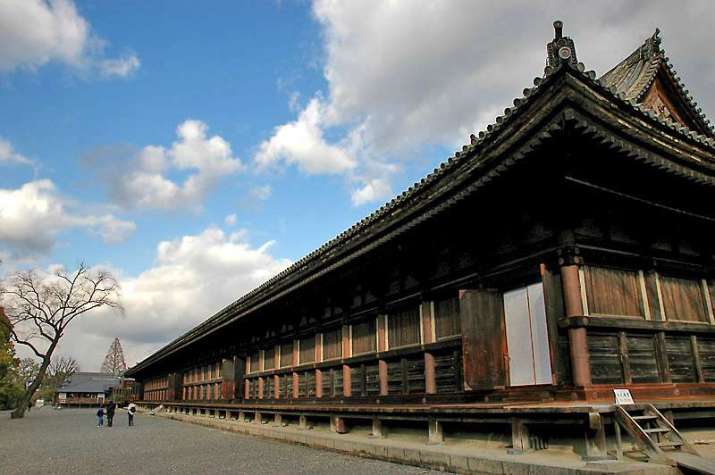
The return of the final renovated sculptures on Friday meant that all the statues were finally together under one roof for the first time in 26 years, with the exception of five that are on loan to museums in Kyoto and elsewhere.
“When the weather is fine and the rays of the morning sun come in, they look most beautiful,” said Seiko Tabuchi, a senior official at Myoho-in. The brightness is “completely different” from before the repair work began, Tabuchi added. (The Japan Times)
Each standing some 1.6 meters tall, the statues of Senju Kannon were made from Japanese cypress covered in gold leaf, from the end of the Heian period (794–1185) to the Muromachi period (early 14th century to late 16th century). Of these, 124 were rescued from the fire of 1249.
Restoration work mainly involved painstakingly cleaning away years of accumulated dust and grime, and repairing the gold leaf outer layer to prevent it from peeling off. The statues have been made open to the public through to 26 November.
The bodhisattva Avalokiteshvara embodies the compassion of all buddhas and is venerated in almost all Buddhist traditions. The thousand-armed manifestation of the deity is equipped with 11 heads to better bear witness to the multitude of suffering of all sentient beings, and 1,000 arms to better help the suffering multitudes. While the actual statues have only 42 arms each, subtracting the two regular arms and multiplying the remaining 40 by the 25 planes of existence gives the full 1,000.
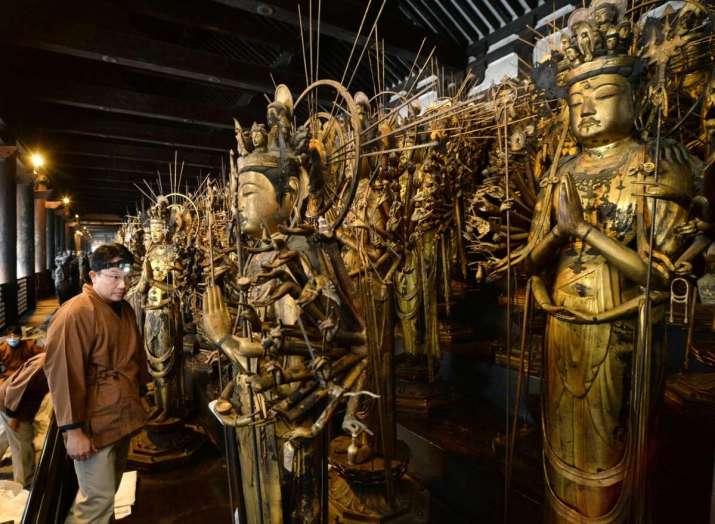
Buddhism and Shinto are the two most widespread religious traditions in Japan, with 79.2 per cent of the population identifying as practicing Shinto and 66.8 per cent identifying as Buddhists, indicating a high level of overlap between the two traditions, although, paradoxically, a majority of Japanese also identify as atheists for a number of cultural reasons. Christians represent 1.5 per cent of the population, while other religions make up a combined 7.1 per cent, according to data for 2017. The most popular schools of Buddhism are Nichiren, Pure Land, Shingon, and Zen.
See more
After 45-year wait, repairs declared finished on all 1,001 bodhisattva statues at Kyoto sightseeing spot (The Japan Times)
Repair of 1,001 Buddhist Statues in Kyoto Completed (Nippon.com)
An all-star cast (The Japan News)



